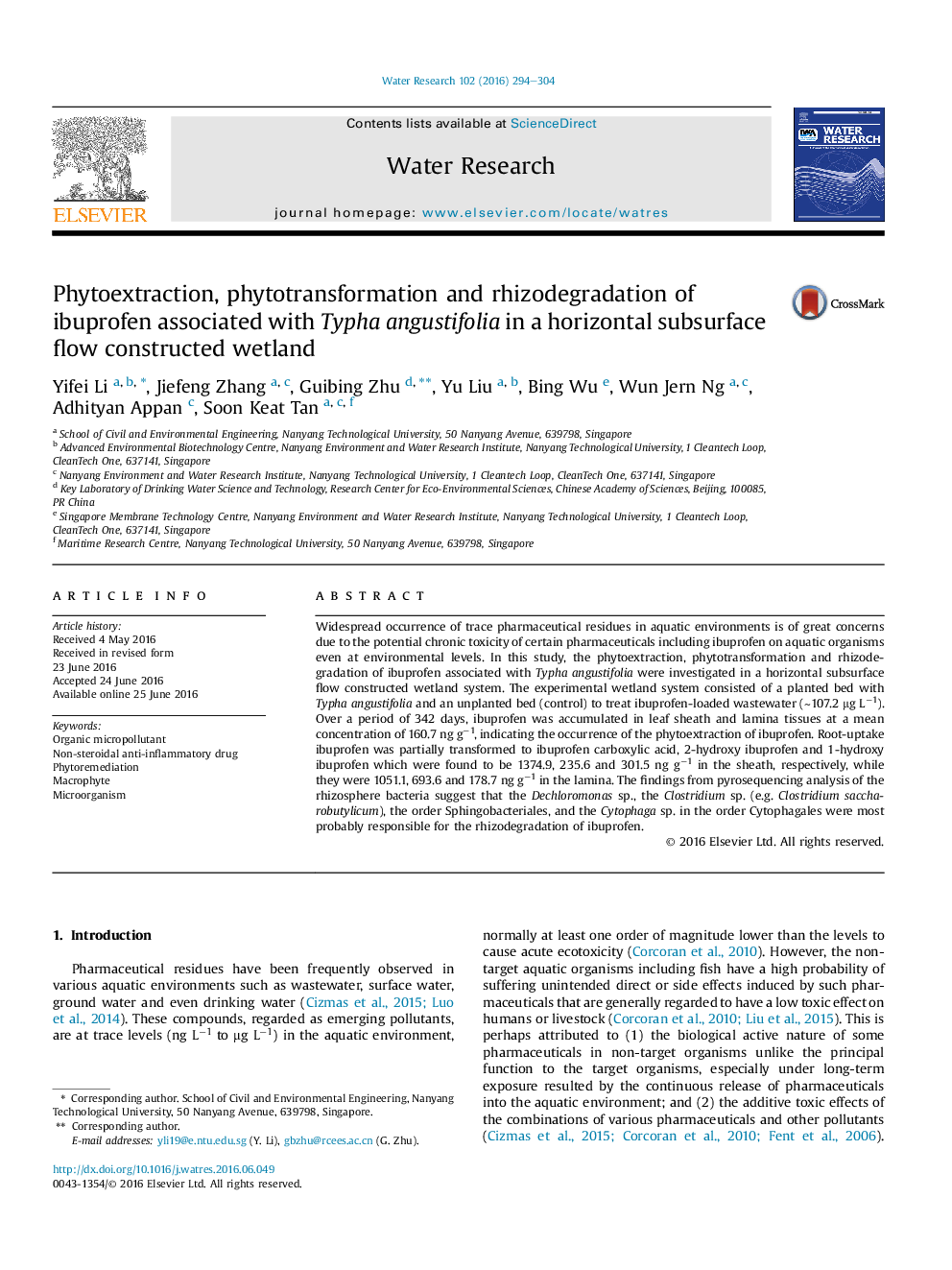| کد مقاله | کد نشریه | سال انتشار | مقاله انگلیسی | نسخه تمام متن |
|---|---|---|---|---|
| 4480860 | 1623066 | 2016 | 11 صفحه PDF | دانلود رایگان |
• Typha angustifolia can partially remove ibuprofen from water by phytoextraction.
• Phytotransformation of ibuprofen occurred in the tissues of Typha angustifolia.
• Typha angustifolia strongly promoted the rhizodegradation of ibuprofen.
Widespread occurrence of trace pharmaceutical residues in aquatic environments is of great concerns due to the potential chronic toxicity of certain pharmaceuticals including ibuprofen on aquatic organisms even at environmental levels. In this study, the phytoextraction, phytotransformation and rhizodegradation of ibuprofen associated with Typha angustifolia were investigated in a horizontal subsurface flow constructed wetland system. The experimental wetland system consisted of a planted bed with Typha angustifolia and an unplanted bed (control) to treat ibuprofen-loaded wastewater (∼107.2 μg L−1). Over a period of 342 days, ibuprofen was accumulated in leaf sheath and lamina tissues at a mean concentration of 160.7 ng g−1, indicating the occurrence of the phytoextraction of ibuprofen. Root-uptake ibuprofen was partially transformed to ibuprofen carboxylic acid, 2-hydroxy ibuprofen and 1-hydroxy ibuprofen which were found to be 1374.9, 235.6 and 301.5 ng g−1 in the sheath, respectively, while they were 1051.1, 693.6 and 178.7 ng g−1 in the lamina. The findings from pyrosequencing analysis of the rhizosphere bacteria suggest that the Dechloromonas sp., the Clostridium sp. (e.g. Clostridium saccharobutylicum), the order Sphingobacteriales, and the Cytophaga sp. in the order Cytophagales were most probably responsible for the rhizodegradation of ibuprofen.
Figure optionsDownload high-quality image (252 K)Download as PowerPoint slide
Journal: Water Research - Volume 102, 1 October 2016, Pages 294–304
